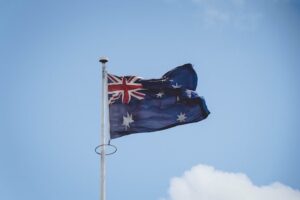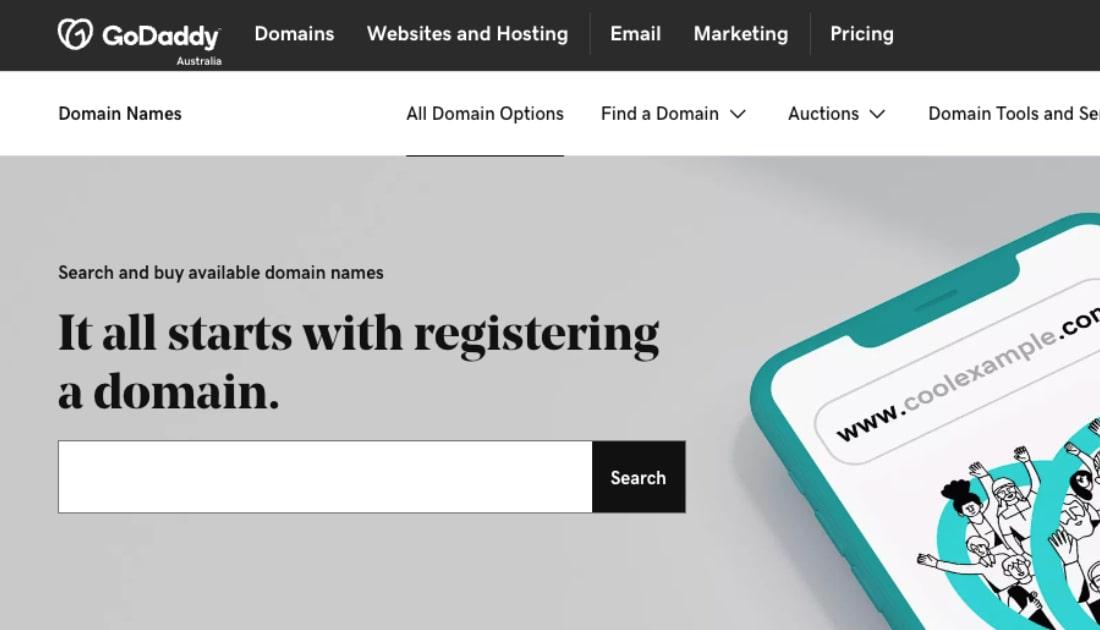Top-level domains such as .com and .org are always likely to remain popular. But having a website name with a country-code top level domain (ccTLD) like .au can be beneficial for local businesses hoping to attract Australian customers. A business with an Australian domain name ending in .com.au tells visitors that the enterprise is locally operated.
Recent changes open the choices and flexibility around Australian domain names.
From 24 March 2022, businesses that own a .com.au, .net.au or .org.au have six-month priority access to the .au versions of each domain they own.
Aussies can now also register for a .au domain extension if it’s a completely new domain — in other words, there’s no matching .com.au, .org.au or .net.au already registered to someone else.
Eligible applicants will have six months to claim their .au domains before they become available for the general public on 20 September 2022.
So, what are these changes and how do they benefit you and the visitors to your website? Keep reading to find out more.
What are Australian domain names?

Behind every website is a domain name — GoDaddy.com.au, for example. The characters that come after the last period in a website address are the top-level domain (TLD) — .com or .net are two examples of TLDs. These tell everyone who sees the web address useful information about what type of website it is, and possibly its location.
But it gets more interesting: every country has a ccTLD assigned to them. For example:
- United Kingdom has the .uk domain extension
- China has the .cn domain extension
- Australia has the .au domain extension
To further clarify the nature of the website, we have:
- .com.au
- .org.au
- .net.au
Websites ending in org.au indicate community and not-for-profit type organisations based in Australia. Web addresses ending in com.au indicate commercial businesses that have registered in Australia and have ABNs.
With Australians proudly and passionately ‘supporting local,’ an .au domain can be a fantastic competitive advantage. It could help your business stand out to the millions of consumers who are looking for local businesses online.
Related: How the new org.au domain changes could affect you
What is meant by "au direct"?
If you are already using the .com.au or another Aussie ccTLD for your website address, you can now apply to purchase the .au version as well. auDA, which manages the .au TLD, refers to the new namespace as “.au direct.”
An .au domain is shorter and therefore easier for people to remember.
Existing domain names will all continue to be available to be registered and renewed. Examples include those ending in:
- .au
- .net.au
- .org.au
If you don’t currently have an Australian domain name for your website and you want to register a new .au domain extension, you can also do this now.
However, it’s important to note that if someone already has an existing .au registered version of that domain name, they’ll be given priority over you if they apply for that name before 20 September 2022.
How are Australian domain names used?

Domain names ending in .au have always been a useful signpost for Australian internet users.
Owning a website with an address ending in .au shows visitors you have a verified Australian presence.
This lets them know your business or non-profit is registered in Australia.
With this information, web users can be more certain they are interacting with Australian-based entities that transact in Australian dollars and follow Australian laws and practices.
The website name must meet the licencing rules that give further reassurance to web users about the nature of the website.
For instance:
- A .com.au web address requires an ABN number
- A .org.au address must meet at least one of the 11 definitions of a not-for-profit organisation
All domain names ending in .au must be available and not on the reserved list.
The perks of a direct Australian domain name
The ability to have a .au website address further improves name options for Australian-based:
- Organisations
- Communities
- Businesses
The benefits of using .au as your primary web address include:
- Shorter and potentially more memorable website names
- An easier web address to type or read on mobile devices
- Shows you’re a modern, tech-forward business
Note: The rules for registering names ending in .com.au and .org.au will remain in place.
Remember, website owners who already have a domain name ending in .au (e.g. .com.au) have first dibs on the shorter .au version of that name.
Registering your .au will prevent anyone else from obtaining it and using it to a) draw traffic away from your website or b) try to sell the domain to you for a profit.
The two stages of the direct Australian domain name rollout

There are two important rollout periods you’ll want to keep in mind if you plan to apply for a .au domain name. I’ll review them each in further detail below:
Stage 1: Between 24 March 2022 and 20 September 2022
During Stage 1, internet users with an existing .au namespace domain like .com.au, .net.au or .org.au can apply to purchase the .au domain extension to match the original.
For instance, the owner of the domain BobSmith.com.au will be able to apply to get the domain BobSmith.au.
If two registered and eligible websites both apply for the same .au, it becomes a contested name.
Most of these cases will depend on the creation date of the existing domain name licence to determine who gets it. An example is if two separate owners of the websites BobSmith.com.au and BobSmith.net.au both apply for BobSmith.au.
The website owner must continue to remain eligible for a .au website domain to keep it.
Note: Any .au domain name that is not contested can be registered during Stage 1.
Stage 2: After 20 September 2022
.au domain extensions haven’t been claimed will come off Priority Hold. This means anyone can apply for the .au domain if it’s showing as available.
Here’s how to choose a good Australian .au domain extension
The .au domain extension must be available (not registered to anyone else) and have the appropriate syntax as per current website name requirements. At all times, the licencing rules remain in place and Reserved Names remain off-limits.
Websites with Australian domain names ending in .com.au will remain for the specific use of commercial businesses.

A domain name goes from good to great when it brings the right people to your site. Aim for one that is:
- Short and simple: It’s ideal to look for ones that are easy to spell. Avoid words with variant spellings like color/colour.
- Represents who you are: Include a keyword that signifies what you do and what you offer.
- Clear and memorable: Choose something catchy and avoid numbers to minimise confusion about whether they are numeric or spelt out.
- Easy to type: Refrain from using dashes or hyphens.
- Protects and maintains your brand: Registering other variants of your domains will protect your business brand by keeping others from registering them. For instance, you can register both au and amazingoffers.com.au if you own a commercial business.
If you are an Australian-based commercial business, you’ll want to pay special attention to that last point.
Editor’s note: What to do with your .com.au once you’ve installed your new .au as your primary website domain name? Just forward it to your website. It’s easy — here’s how to forward a domain registered with GoDaddy.
Key takeaways
Between 24 March and 20 September 2022, verified Australian domain owners can apply for the shorter .au domain extensions of their web addresses. Non-contested .au domains can also be registered now.
After 20 September 2022, unclaimed .au domain extensions will become available for others to buy.
Remember, a good domain name will enable you to:
- Get found online
- Be easily recalled
- Set your business apart
It can be the first indicator to a new visitor about:
- Who you are
- What you do
- Where you're located
Make sure to keep these dates in mind if you’re eligible — be ready to snag your Australian domain name when the time comes!






